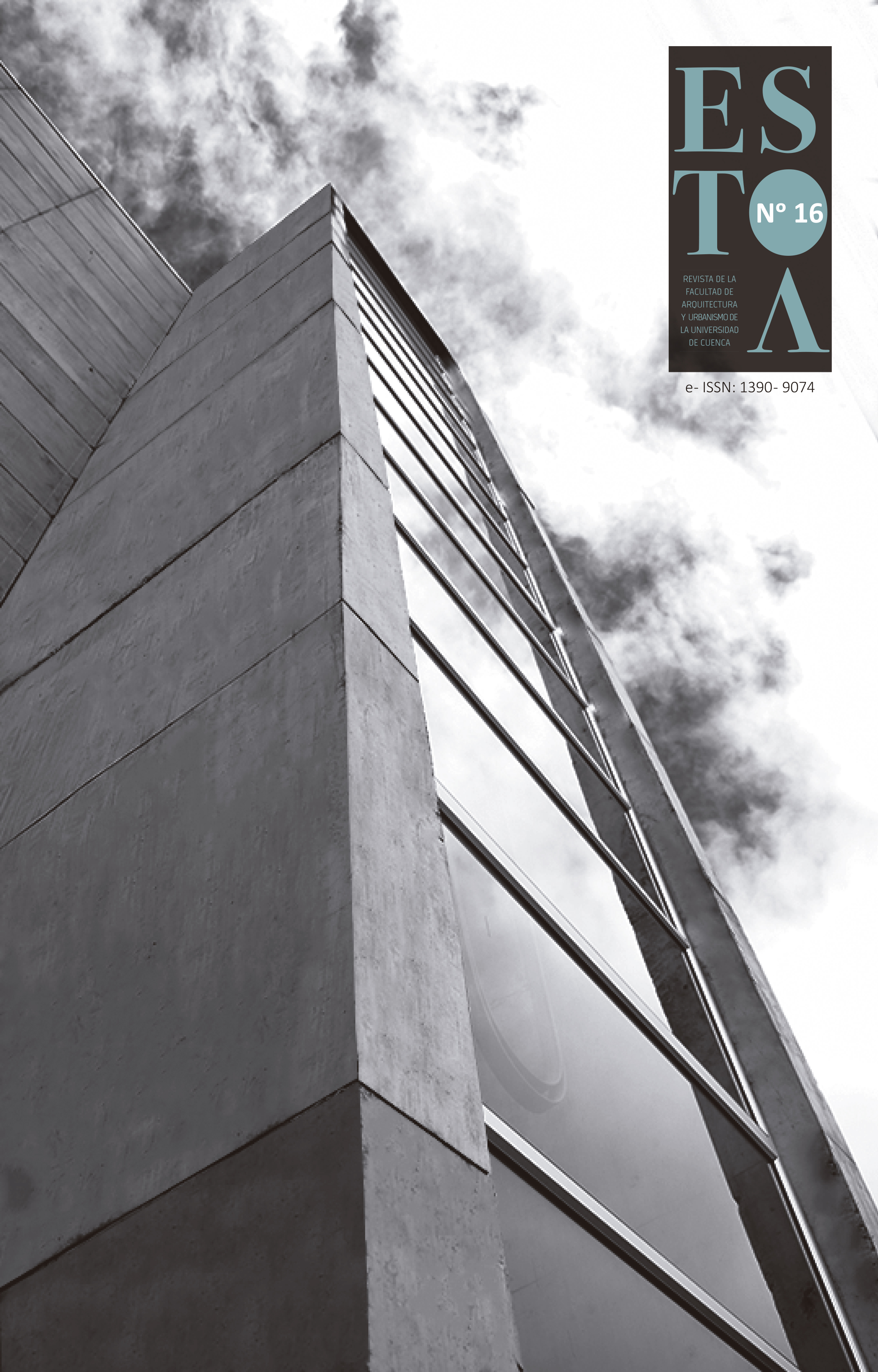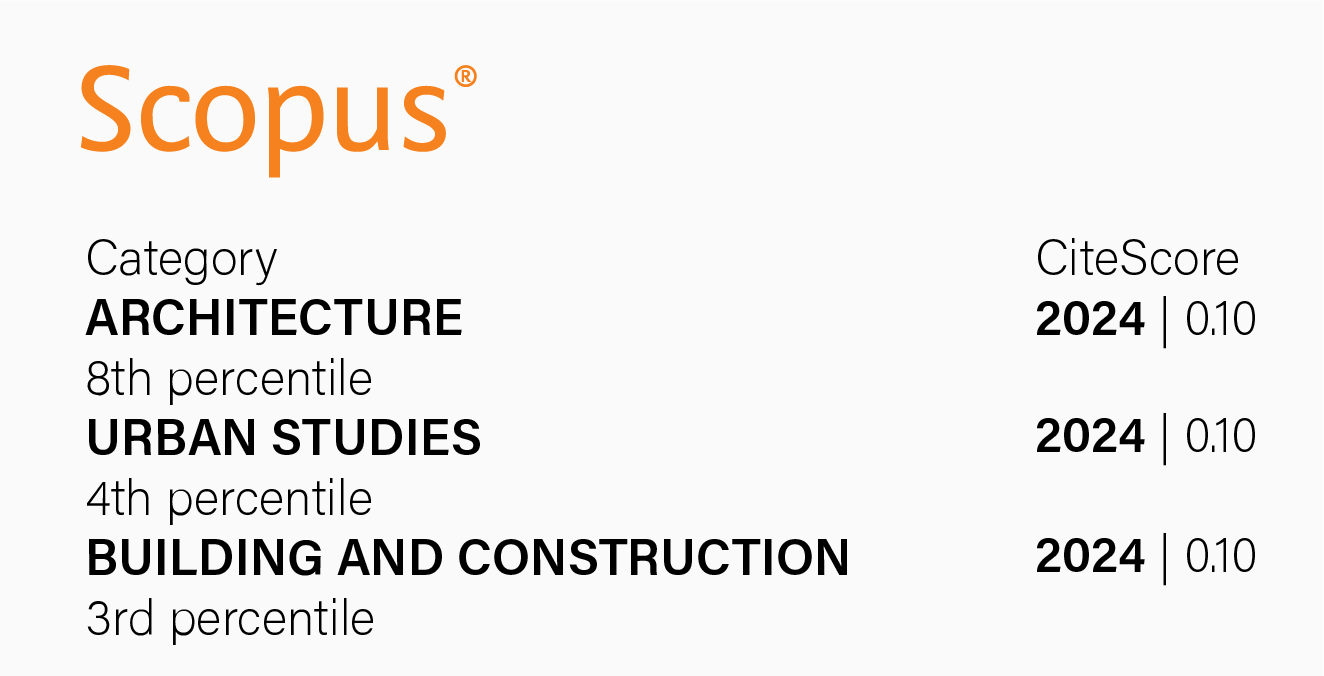Compact city, sprawled city.
Language and manipulation in commercial architectural graphic communication
DOI:
https://doi.org/10.18537/est.v008.n016.a02Keywords:
architectural graphics, compact city/sprawled city, language, symbol, EcuadorAbstract
The image has acquired a predominant role in the architectural discourse, reducing the space to an object of visual consumption. The current ocularcentrism hegemony constitutes a base in the architectural and urban conception. Thus, architecture rather than a space, is an image with its own language, susceptible of multiple interpretations. Under this principle, certain values are associated in an adulterated way to recurrent elements, generating dynamics of manipulation in their graphic communication. With this background, two urban models are contrasted: the compact city and the sprawled city. The approach to its symbolic intentionality is based on the categories given to “function and sign in architecture”, proposed by Umberto Eco: primary (denotative) and secondary (connotative) functions. These concepts have been applied in the analysis of the graphics of two Ecuadorian magazines, one of specialized diffusion (Trama) and one of popular diffusion (El Portal). The contrasting of the found values finally generates a discussion about the graphic language, its ethics, and the role of the graphics of other categories of architectural diffusion, such as the scientific magazines or the ‘little magazines’ of 1960’s – 1970’s in response to the “society of the spectacle” of that time.
Downloads
References
Baudrillard, J. (1987). Cultura y simulacro. Barcelona, España: Kairos.
Cassirer, E. (1948). Saggio sull’uomo. Milán, Italia: Longanesi.
Colomina, B. (2006). La Domesticidad en Guerra. Barcelona, España: Actar.
Colomina, B. (2010). Clip Stamp Fold. The Radical Architecture of Little Magazines. Barcelona, España: Actar.
Davis, M. (2001). Más allá de Blade Runner: Control urbano: la ecología del miedo. Barcelona, España: Virus.
Debord, G. (1967). La sociedad del espectáculo. Barcelona, España: Pre-textos.
Eco, U. (1971). La función y el signo en arquitectura: la comunicación arquitectónica y la historia. Cuadernos de Arquitectura y Urbanismo, (82), 30-33.
Fernández Galiano, L. (2016). Quince tesis. Arquitectura Viva, (189), 17-50.
Jay, M. (1968). En el imperio de la mirada: Foucault y la denigración de la visión en el pensamiento francés del siglo XX. En M. Foucault, A critical Reader. Oxford: Basel Blackwell.
Jay, M. (2007). Ojos abatidos. Madrid, España: Akal.
Koolhaas, R. (2011). Grandeza, o el problema de la talla. Barcelona, España: Gustavo Gili.
Mantzou, P. (1999). La arquitectura en la era de los media. Astrágalo. Arquitectura y mass media. Alcalá de Henares, España: Celeste Ediciones.
McLuhan, M., Fiore, Q. y Agel, J. (1987). El medio es el mensaje. Barcelona, España: Paidós.
Miranda, A. (1999). La arquitectura frente a la doxa. Astrágalo. Arquitectura y mass media. Alcalá de Henares, España: Celeste Ediciones.
Oldenburg, R. (1999). The Great Good Place: Cafes, Coffee Shops, Bookstores, Bars, Hair Salons, and Other Hangouts at the Heart of a Community. Boston, EE.UU: Da Capo Press.
Pallasmaa, J. (1996). Los ojos de la piel. La arquitectura y los sentidos. Barcelona, España: Gustavo Gili.
Sartori, G. (1998). Homo videns. La sociedad teledirigida. Buenos Aires, Argentina: Taurus.
Smithson, A. y Smithson, P. (2003). But today we collect ads. Architecture d’adjourd’hui, 40-45.
Published
How to Cite
Issue
Section
License
The Journal declines any responsibility for possible conflicts derived from the authorship of the works that are published in it.
The University of Cuenca in Ecuador conserves the patrimonial rights (copyright) of the published works and will favor the reuse of the same ones, these can be: copy, use, diffuse, transmit and expose publicly.
Unless otherwise indicated, all contents of the electronic edition are distributed under a Creative Commons Attribution-NonCommercial-ShareAlike 4.0 International License.




